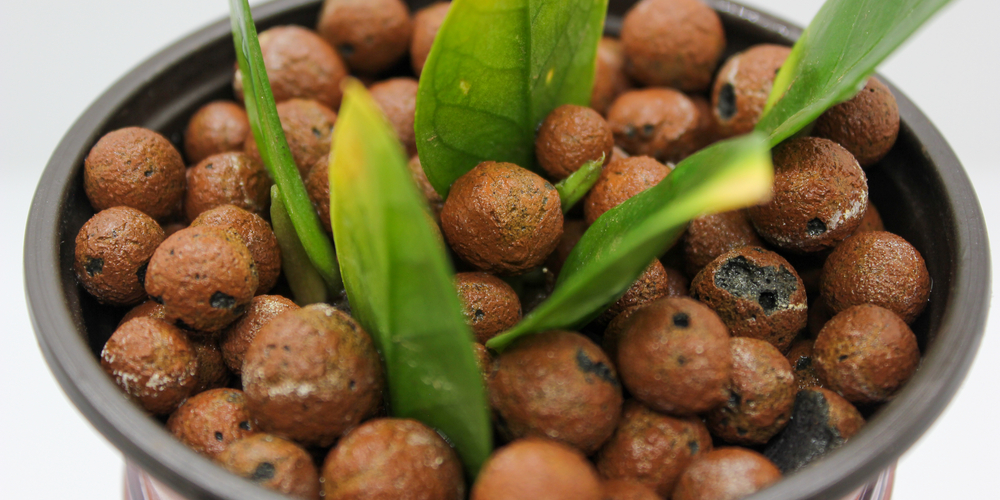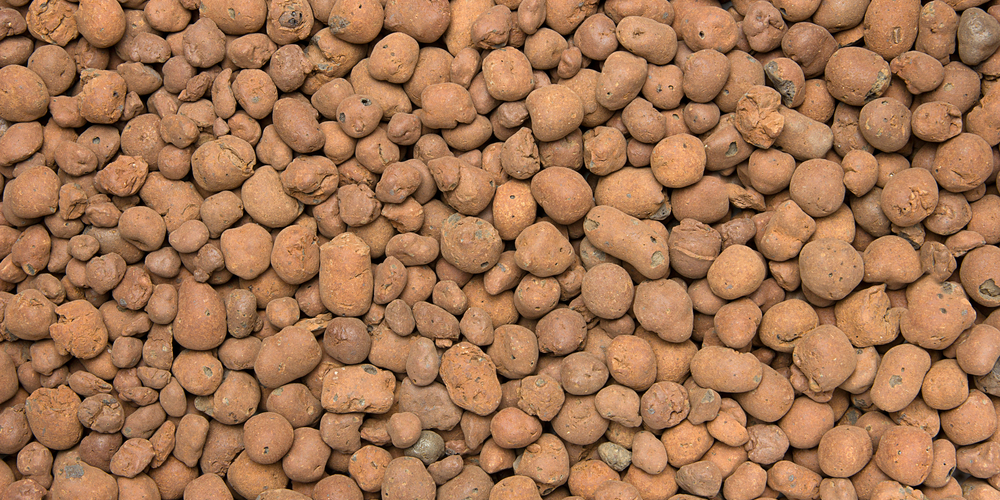The word Leca is an acronym for Lightweight expanded clay aggregate. It’s a mouth full, and it might seem complicated however it’s quite simple once you understand what it is. In essence, LECA is a soil-like growing medium that you can use to cultivate your plants. LECA is a set of baked clay balls that swell when submerged in water.
Clay is cooked to around 1,200 °C in a rotary kiln. Numerous small bubbles emerge during the combustion process, enlarging the clay and generating a hexagonal pattern. LECA has a roughly circular shape due to rotational motion in the kiln, and it comes in a multitude of sizes and thicknesses.

When you use soil, feeding your plants is straightforward because it contains nutrients. LECA, on the other hand, is nutritionally deficient. So, why would you employ this method to cultivate your plants in the first place?
Because farmers can manage the number of nutrients and moisture that the plants absorb during the growth stage by using LECA clay balls, which have a unique structure. LECA clay spheres are inorganic, balanced in pH, fungus-free, and non-rotting. As a result, they’re a great growing medium, topping, and drainage system.
How to Use Leca for Plants
Take the plant out of the soil
Instead of removing the plant from the pot right away, begin by softening the soil surrounding it. You can accomplish this with a shovel or lightly kneading the soil if the ground is soft enough. Taking it out of the ground can cause the plant to get stressed or perhaps die. As a result, this must be done with caution. Eliminate any loose dirt by running your hands through the exposed roots. There’s no need for perfection here; a couple of hand-run-throughs should be enough.
Must Water the Roots
Rinse the roots to remove extra soil from the plant. It’s important to remember that the goal is to avoid harming the plant. Most of the time, lukewarm water will suffice. Gently massage your hands into the roots once more to remove any remaining soil.
Fill the container with LECA and plants.
Toss in a few LECA pellets into your container or pot. Fill it only about a third of the pot with clay balls. After which, you can place your plant atop the LECA, with water roots sitting on top of the LECA balls. Then fill LECA over the plants’ roots until the pot is almost full.
Test the pH of your water and make any necessary adjustments.
Check the pH of your water using a PH meter before putting it in your plants. A pH of 5.4-6.6 is ideal for most houseplants. If the pH of your water is too high or too low, you’ll have to increase the pH and vice versa. This can be done by introducing an alkaline solution for low pH and a neutral solution for high pH.
Find the best lighting
All that’s left now is to set your freshly potted plant in a light-friendly location and wait for the plant to soak up the water at its own pace through the aqua clay balls.
To avoid algae formation, let the water dry completely before refilling. When it’s time to replenish, ensure the sleeve is full of nutrient-rich water.
Why you should consider using LECA
The features of LECA offer a wide range of advantages to both Outdoor and indoor plant producers. If you’re still undecided about putting these circular clay pellets in your garden, consider the following benefits.
Water Supply Continuity
This fundamental hydroponics system takes care of everything for you! Water is drawn up to the plant through tiny spaces inside the LECA balls, including open areas between balls. LECA acts like wicks or capillaries, ensuring your houseplants receive adequate water at the appropriate time. You won’t need to irrigate your plants as often as before.
Reusable
Unlike soil, which constantly loses its nutrients and is disposed of over time, LECA can be used indefinitely. Although LECA is more costly than soil, it will quickly pay for itself if you utilize it for numerous harvests.
Aeration
Its air pockets and holes between the clay balls allow oxygen to get through and reach the plant roots quicker and more efficiently than soil. This encourages plant growth while also protecting it from Fungal or Bacterial infections and root rot.
Stability
The clay balls provide a supporting structure for your plant’s roots as they develop into the LECA. As your plant grows, it safely and firmly attaches itself to the LECA balls, and this will keep it from falling over.
Versatile
We often talk a lot regarding potting mixes and plant soils. And some plants demand one sort of soil while others prefer a different type. However, LECA is quite adaptable. It can be used on practically any plant. This means you’ll save room by storing fewer different mixes for various plants. This will also give you the advantage of growing any plant variety without the worry of having the right soil to support its growth.
Cleaner Than Soil
If you often cultivate plants in an indoor setting, You should be mindful of how much soil can mess up your indoor space. The only thing you’ll have to worry about when using LECA is only a little dust that rises once you open the packaging bag. Sure, you’ll drop something from your LECA bag occasionally, but it’ll be a lot easier to clean.
LECA Aesthetic
LECA has an oddly lovely appearance. It can transform a plain garden plant into a focal point. Most experienced gardeners always try to strike a balance between wanting plants in their homes but not allowing them to take over.
However, they need to be plant enthusiasts, not plant maniacs. As a result, gardeners always look for ways to make the plants blend in with the rest of their condo’s decor. So, any time you can improve the appearance of your houseplants, you need to take the chance. LECA balls have an aesthetic appeal that brings a unique design to indoor gardening for pot plants compared to plain soil.
Conclusion
LECA balls are ideal for growing plants since they make irrigation considerably easier by minimizing the possibility of pest infestation and enabling you to simply “check in” on the plants. Hopefully, the advantages that have been listed above might sway you into giving LECA a shot. Thank you for taking the time to read this article. We hope it proves useful in maintaining the health and beauty of your plants!
